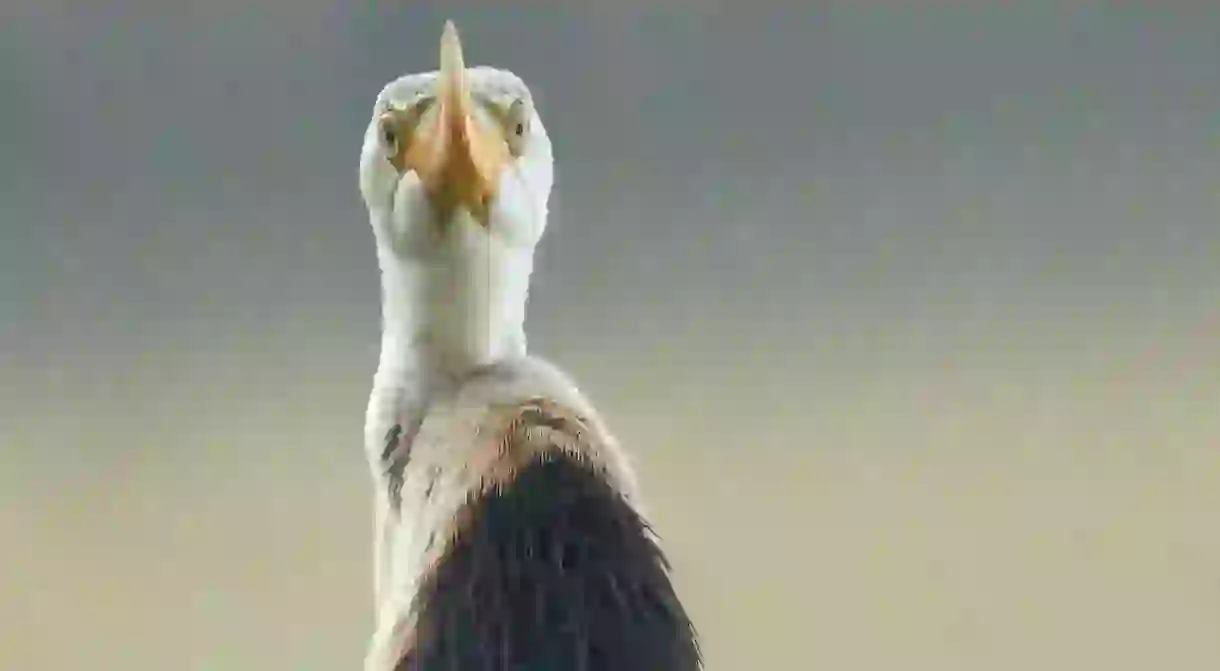The Best Bird Watching Spots in Ghana

With over 760 bird species, Ghana is truly an amazing destination for bird watching. The local tour guides are very proficient in locating and engaging local bird populations. If you’re planning a visit to Ghana and want to check out the wildlife, take a look at our round-up of top bird watching spots.
Ankasa
One of Ghana’s main natural reserves is Ankasa, situated at the southwest corner near the border with Cote d’Ivoire, an area that receives the highest amount of rainfall in Ghana. There are more than 190 bird species here, including the rufous-winged illadopsis (Illadopsis rufescens), the copper-tailed starling (Lamprotornis cupreocauda), the Preuss’s weaver (Ploceus preussi), the white-breasted guineafowl (Agelastes meleagrides) (classed as ‘vulnerable’ – has been seen and even photographed in recent years), and the grey parrot (Psittacus erithacus) (classed as ‘near threatened’ – still exists in small numbers in Ankasa). Trapping of wild birds for trade persists in southwest Ghana and numbers overall continue to decrease.
Ankasa Resources Reserve
Forest, Park


Sakumono and Accra Plains
Sakumono Ramsar Site is a wetland and Accra plains has vast farmlands, shrub turfs and moderately steep sections where experts have recorded about 70 species of waterbirds with an estimated maximum number of about 30,000 birds.
Sakumono Ramsar Site
Natural Feature

Sakumono Lagoon in Tema is a wetland protected area and the closest location to Accra for good bird watching. Urban development has greatly reduced this area, though it is still a recommended bird watching site. Common species to be found here include Egretta garzetta, E. gularis, Glareola pratincola, Charadrius hiaticula and Sterna hirundo, as well as breeding waterbirds and the black heron (Egretta ardesiaca) which is considered sacred and protected by local taboos.

Kakum National Park
Visitors can use the Sun Bird Trail here together with the canopy walkway to search for more than 400 bird species. The long-tailed hawk (Urotriorchis macrourus), the rarely seen Nkulengu rail (Himantornis haematopus), the Akun eagle owl (Bubo leucostictis), and the black spinetail (Telacanthura melanopygia), as well as globally threatened and near-threatened species can be found at Kakum.
Kakum National Park
Park

Keta Lagoon
Canoe on the lagoon or use the Woe, Fiahor, Tegbi, Adina and Afiadenyigba bird watching lookouts. Find the Tringa erythropus and other species which occur in large numbers, including Calidris ferruginea, C. minuta, Himantopus himantopus, Dendrocygna viduata, and several heron and egret populations.
Keta Lagoon
Natural Feature

Keta is the largest lagoon in Ghana. It is a Ramsar site and Ghana’s most important marine birding site, home to 76 waterbird species including globally significant numbers with an estimated total population of well over 100,000.

Xavi Bird Sanctuary
Over 90 different bird species reside in Xavi Bird Sanctuary near the Keta Lagoon. Canoes run down Lotor River to the Avu Lagoon for bird lovers throughout the year.

Atewa Range Forest Reserve
At Atewa, you can find the green-tailed bristlebill (Bleda eximius), the red-cheeked wattle-eye (Dyaphorophyia blisetti), and the white-necked Picathartes (Picathartes gymnocephalus).
Atewa Range Forest Reserve
Natural Feature

Atewa is an incredibly beautiful forest located on the way to Kumasi. The Atewa Forest Reserve is only one of two evergreen Upper Guinea Forest ecosystems remaining in Ghana. Recognized as a Globally Significant Biodiversity Area, this forest has an amazing number of butterflies and offers better bird watching than Kakum or Ankasa. Unfortunately access is difficult or impossible during the rainy season.
Tono Dam
Tono Dam near Bolgatanga in the north of Ghana has large populations of water birds. Tour guides plan unique nocturnal excursions for sightings of rare birds here.
Mole National Park
The largest national park in Ghana also has the largest bird checklist of any site in Ghana, with at least 300 species. The broad-leaved Guinea woodland attracts large communities of birds associated with the drier northern climate – January is the best time of the year to visit.
Mole National Park
Natural Feature, Park

Owabi Forest Reserve
Owabi Forest Reserve and Bird Sanctuary is a secondary forest found close to Kumasi. It is Ghana’s only inland Ramsar site and boasts a great variety of winter migratory birds.














